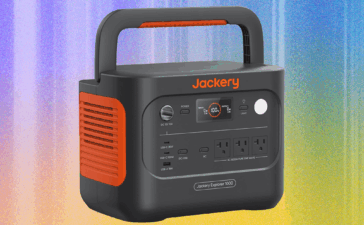Brendan Wallace has a lot on his mind lately. Wallace is the co-founder of Fifth Wall Ventures, a nine-year-old proptech venture firm with $3.2 billion in assets under management. He’s also a homeowner in L.A., which continues to battle raging wildfires. While his place remains intact, many of his friends haven’t been so lucky.
Wallace is becoming accustomed to external forces beyond his control. First, the pandemic drastically altered the landscape for many of Fifth Wall’s limited partners, which reads like a who’s who of real estate (CBRE, Cushman & Wakefield, Lennar). Unfortunately for many of those same players, office vacancy rates still stand at roughly 20% nationwide, and analysts don’t expect that number to budge as many companies abandon the idea of a full return to the office.
Proptech has also taken its slings and arrows in recent years, partly owing to high-fliers whose fortunes turned fast, like WeWork, which emerged from bankruptcy last June following a failed IPO and massive restructuring.
Change typically presents hidden benefits, however, and Wallace believes the industry is poised for a bounce back. As he sees it, there are ballooning opportunities tied to asset resilience — or using tech to help real estate assets withstand damage and disruption. He also sees a huge opportunity to help Fifth Wall’s limited partners more aggressively seize on the tech industry’s demand for data centers – and the energy required to fuel them.
We talked with Wallace recently about some of those trends, along with life in L.A. during what has felt to so many like the apocalypse. You can listen in on that full chat here or read on for excerpts from our conversation, edited lightly for length.
You’re in L.A. How are you doing?
It’s just tragic what has happened. Everyone on our team is safe. We’re in Santa Monica and they had to evacuate our office. This is a crucible moment for Los Angeles, and there’s going to be a lot of reflection on the other side of this, with the big political and economic questions that California has been grappling with for a long time coming into the fore. That’s a positive thing, but right now, it’s just devastating to see parts of this beautiful, amazing city destroyed.
How are you thinking about what comes next? There’s going to be a lot of cleanup, a lot of reconstruction. That must represent unexpected opportunities, as unseemly as that is to say.
I wouldn’t say opportunities . . .I do not think that on the other side of this crisis, people are going to stop wanting to live in Los Angeles . . .So I remain optimistic that this will be a moment of rebuilding and reimagination for one of America’s greatest cities. And I would say we at Fifth Wall are excited to be a part of that. What being a part of that looks like? I don’t know yet.
A major issue that homeowners and business owners were dealing with is [even before the fires] is the flight of insurance providers from the state . . .
We’re one of the most active investors in fintech for the residential industry. Fifth Wall invested in Hippo, which is a home insurance company that was very active in California. [Editor’s note: Hippo stopped writing new homeowners’ insurance nationwide last summer.]
I mean, a lot of the regulation that was very well-intentioned and focused on benefiting consumers has actually had the opposite effect, and it’s creating market asymmetries that are exacerbating the very problems we have now, which is a lot of homes being uninsured or people getting their insurance canceled. So what we are excited about is two things: there are better solutions for consumers that could be developed, and we’re interested in potentially investing in them. The other thing that I’d like to see is a streamlining of the amount of bureaucracy that is required to launch insurance companies.
Regulations aside, does the math work out? It’s hard to understand how startups with different regulations can [insure] California when these devastating things happen that make it very hard for insurers to recoup their investments.
It’s very hard to answer that question without looking at a county-by-county analysis. It’s possible that some areas are going to be uninsurable, but it’s also possible that some areas are going to be uninsurable that otherwise would be without regulation, and the latter is what I’m focused on mitigating.
This isn’t just a California problem. It might be more acute in California and the value of homes might be higher in California, but we have to solve this as a nation.
Do you think the wildfires might reshape the way real estate is valued in these high-risk areas? That doesn’t seem to have happened in, say, Miami.
I think it is going to increase prices for a few reasons. There’s going to be a lot of new construction in Southern California that’s going to drive up the replacement cost for homes. People are still going to want to live in these beautiful parts of the country; you aren’t going to see an exodus of people simply because of this.
The increase in insurance premiums is also going to lead to less affordability of homes, and that could have downward pressure [meaning houses might cost slightly less because sellers have to factor in the high cost of insurance]. The net of it, though, is this is going to increase a lot of home prices throughout Southern California and especially in West Los Angeles.
You’re an investor in ICON, a 3d printer of modular homes. Do you see a potential opportunity for that company? We reported that it laid off a quarter of its staff just this month before the fires broke out.
ICON is a really exciting business. Fifth Wall is a small investor in that company. Our thesis was not so much around wildfire prevention or post-natural-disaster rebuilding but around, how do you build homes faster and cheaper and with fewer materials than you do today? What they’ve built is a way of effectively printing a home and in the process, massively reducing the waste associated with home construction.
One of the crazy stats that most people don’t know is that about 5% of all the material in U.S. landfills is material that went to a construction site and then went straight to a landfill. It’s a massive problem that drives up cost for the consumer, makes it harder to operate construction companies, and has a massive carbon footprint. The question, I think, is: how can you scale that up? Can you make that cost effective?
Have you made investment in companies that are specifically focused on making nonflammable materials?
No, but we should, and I think it’s a space that will receive a lot of attention right now. . .[Going forward] retrofitting is going to be the big problem. Most of the homes we need to protect are already built, and they are built with materials that can be very hard to rip out. And so in real estate tech, the bulk of the problem and the bulk of the value that you can add to society is by retrofitting the assets we already have, whether those be buildings or homes or infrastructure assets.
Of course, in rebuilding, we should be very cognizant about the materials used, and we should use the best solutions. But the vast majority of the homes at risk in Southern California already exist today.
Broadly speaking, the proptech sector has seen fewer deals in recent years. Is it fair to say that overall interest in the industry has cooled?
It has absolutely cooled. I think we just lived through – and are still in – cold, bitter capital markets for proptech. You hadn’t seen any big M&A events. Basically none of the focused venture funds, Fifth Wall included, raised any capital during that period. There were very little VC inflows to the space.
The flip side of that is what you’re seeing now — companies that survived this Darwinian extinction event. The companies that made the right cost cuts, that pivoted their business model, that pivoted their marketing, and that went through recapitalizations are emerging on the other side of this stronger, more viable, and more durable in a long term. I do think spring has sprung for the prop tech industry, and you’re seeing lots of positive indicators for the space right now. [Editor’s note: Here, Wallace references the IPO of ServiceTitan, a Fifth Wall portfolio company that makes software for contractors and went public in December, and the recent sale of another portfolio company, Industrious, to its partial owner, CBRE.]
What about this existential threat to the office industry about which we’ve been hearing for years?
Long term [there are questions] about the office industry, but alongside that you’re seeing explosive growth in categories that were never even thought of as real estate before. Data centers are absolutely exploding. And some of those that that explosion is forcing the real estate industry to grapple with big questions. Like, the AI revolution that has everyone enthralled is absolutely not possible without a massive scale up of data centers in the U.S. Yet a massive scale up of data centers in the U.S. is absolutely not possible without massive production of new energy.
Go on . . .
We need racks of servers that can do training and do inference all over the world – and we need lots of them. This is not a surprise or a secret in real estate capital markets; data centers have probably been for the past two years the hottest asset class in the real estate industry. But now there’s an associated problem that’s emerging . . . which is that data center is so energy intensive, the local utility will not allow you to plug in that grid . . .
That’s forcing the real estate industry to say, ‘We have to be in the energy business ourselves if we want to be in the business of computational data centers.’
What are your LPs expecting you to do? Are you going to be investing in fusion startups now?
Fusion is obviously really exciting, but we have a more near-term problem. We need the energy now or next year. Ideally, we do not want those to be fossil-fuel based, dirty energy sources . . so that really leads to the renewables that we know are cost viable, [which is] most obviously solar. [So] the bottom line is, yes, we are investing in solutions to accelerate the development of solar alongside our real estate investors, and real estate companies will become energy development companies themselves.






